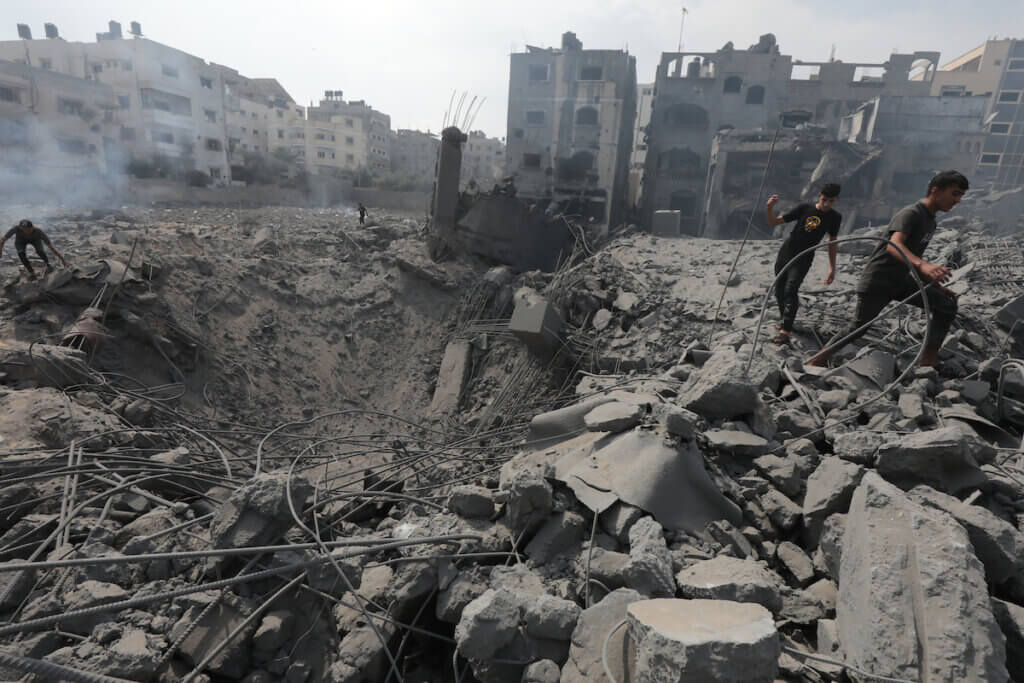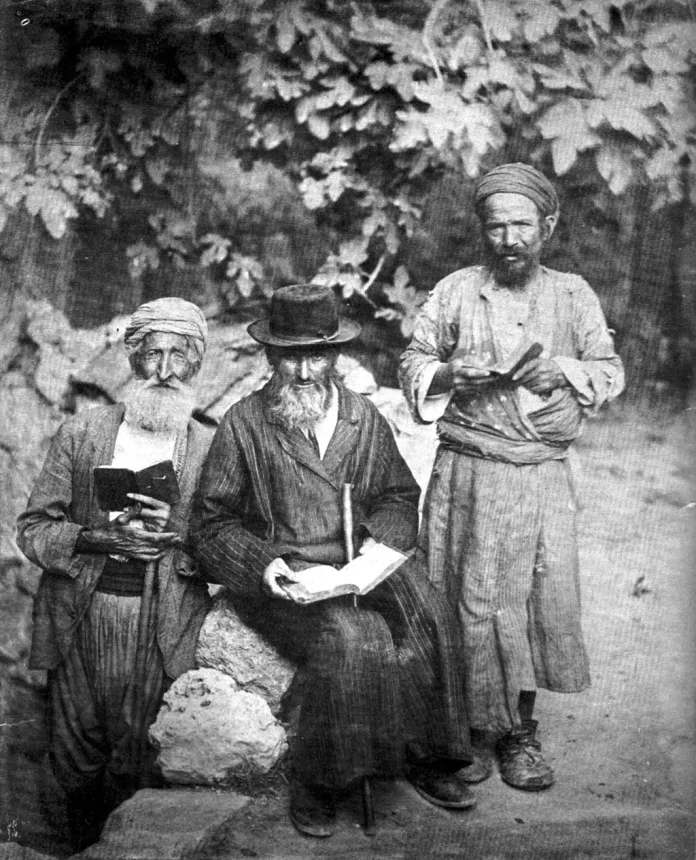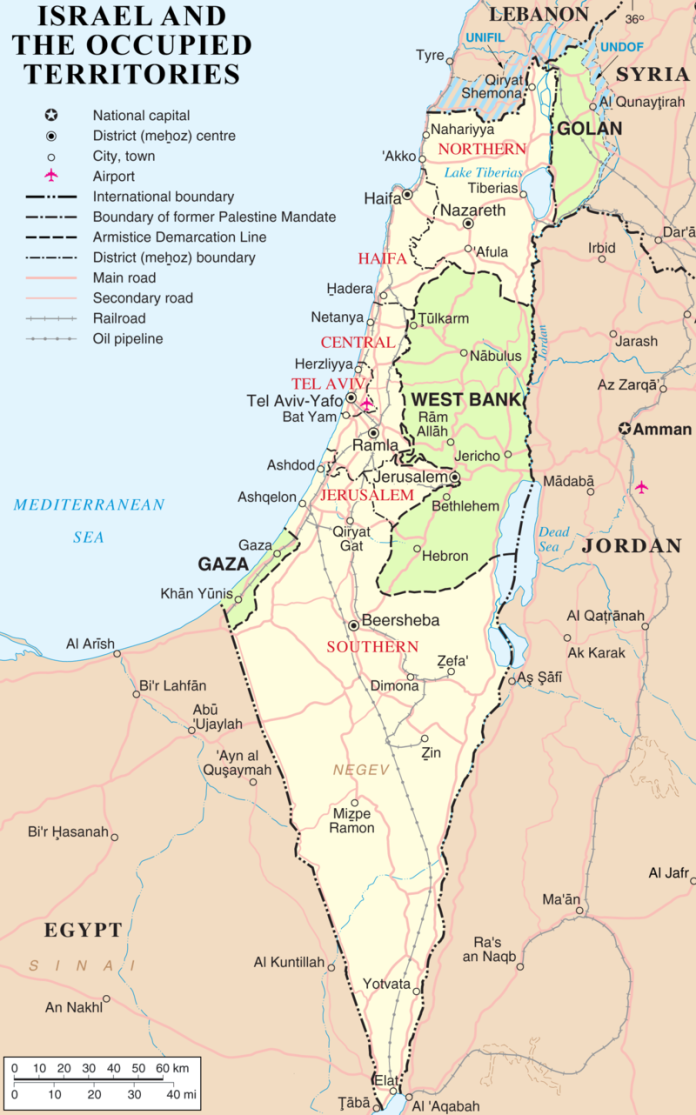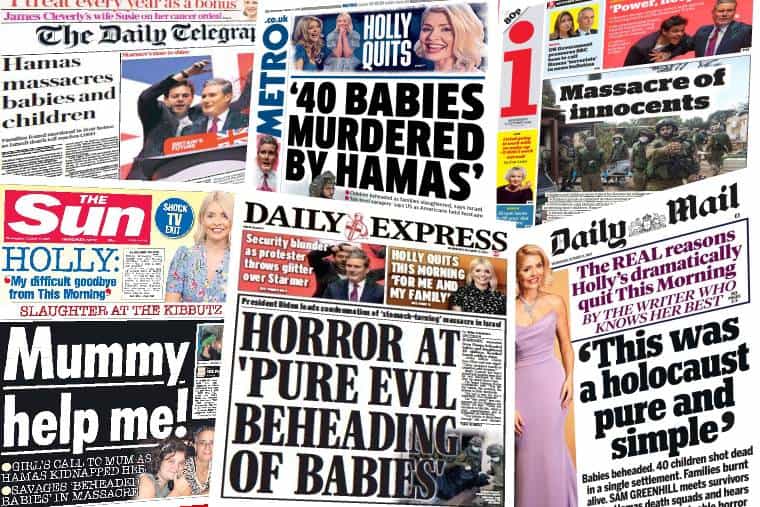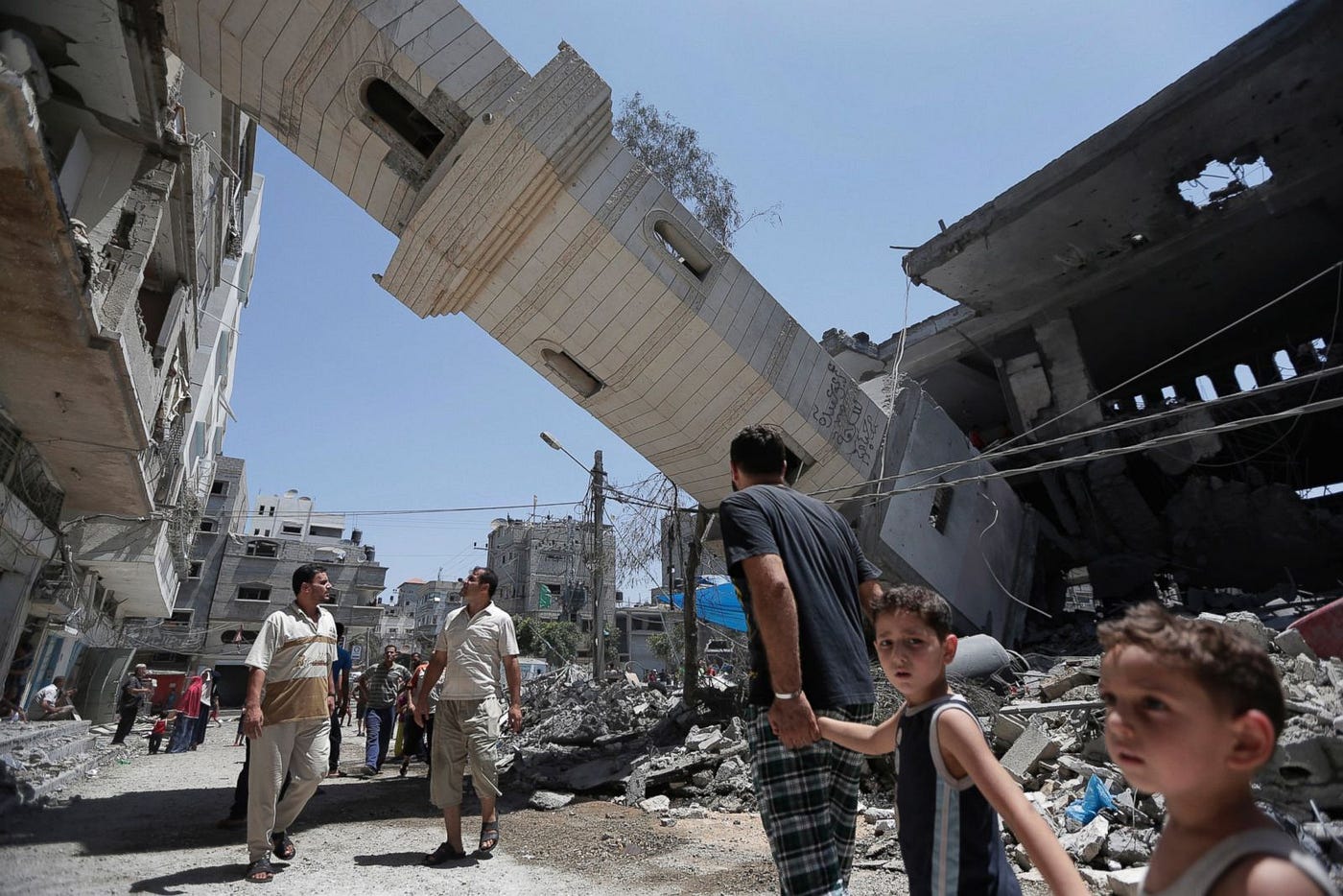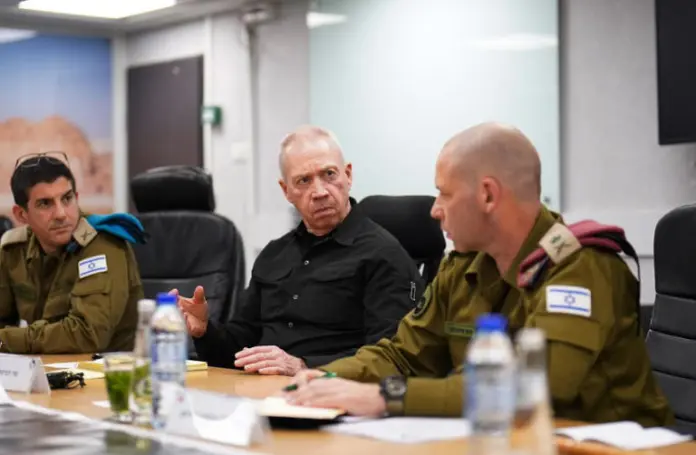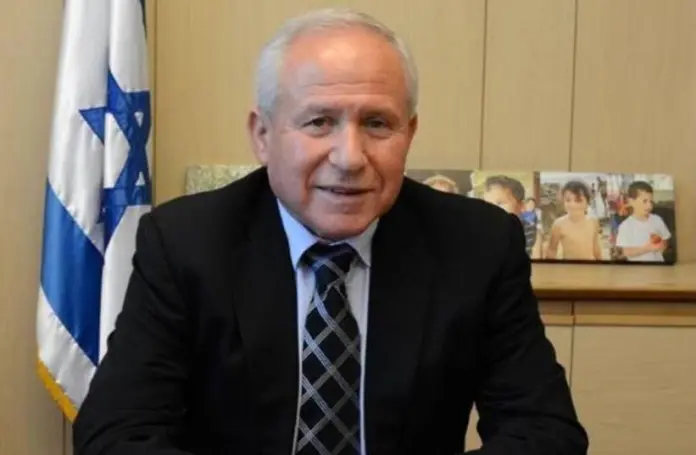Holocaust weaponized. Ever since the Axis War (1939-45), Zionists and their supporters have manipulated popular sympathy for the Jewish victims of the European holocaust in order to obtain support for Zionism. They speak as though Jews were the only victims of the deliberate Nazi mass murder (systematic mass killing plus intentional starvation programs in occupied territory and POW camps). In fact, the actual death toll was more than 17 million (at least 11 million Slavs, some 5.9 million Jews, and probably more than 250,000 Romani). Zionists and supporters insist that the world must atone for the genocide of the six million Jews by granting them Palestine for a “Jewish state,” but they ignore the fact that justice would require any such compensation to be borne by Christian Europe, which perpetrated and/or permitted the genocide, not by the Palestinian Arabs, who had no part in it.
Anti-Semitism? Zionists and their supporters routinely attempt to silence opponents of Zionism and critics of Israeli crimes against humanity by smearing critics as purveyors of “anti-Semitism,” the word which Zionists and their allies use exclusively to mean Judeophobia (hatred of Jews), even though the Arab victims of Zionism are also Semitic in language and ancestral origin. When their critics are Jewish, as many are, Zionists routinely disparage and dismiss them as “self-hating Jews.” As Zionists obsessively smear their anti-racist critics, they generally give much less attention to actual Judeophobes. With growing popular opposition to Israeli crimes against the Palestinian people, states abetting those crimes have increasingly enacted laws criminalizing free-speech activities in support of Palestinians. Those enactments include prohibitions against boycott and divestment (BDS) participation and laws defining opposition to Zionism as “anti-Semitism,” using the Zionist IHRA (International Holocaust Remembrance Alliance) definition which includes, as “anti-Semitism,” opposition to the existence of Israel as a Jewish supremacist state.
HAMAS. Israel, its Western allies, and their mainstream media portray Hamas as a “genocidal” “terrorist” organization. Relevant facts, listed below, mostly go unreported, distorted, or falsified.
Origin. Hamas originated (1987) in Palestine as a transformation of Mujama al-Islamiya, which had been formed (1973) as a Palestinian affiliate of the Muslim Brotherhood. Hamas, unlike the Brotherhood, embraced a Palestinian national liberationist political orientation.
progressive secularism of the Palestine Liberation Organization [PLO]. However, Western alliance and Israeli motivations for condemning Hamas have nothing to do with its Salafist leanings; they are solely on account of its militant resistance to Zionist oppression of the Palestinians. In fact, Western supporters of Israel make no complaints where autocratic Arab states (Saudi Arabia, UAE, Qatar), allied to the West, impose patriarchal and theocratic policies similar to those embraced in Brotherhood doctrine. It must be noted that Hamas’s doctrine and actual practice (since obtaining governing power) have been inconsistent. For example, in Gaza, a local faction (along with some rival Islamist groups), has periodically attempted to impose the Brotherhood interpretation of sharia law (including hijab) through religious coercions and persecutions, in defiance of the contrary policy prescribed by Hamas’s more permissive leadership. In fact, said leadership (though still embracing widely held patriarchal views on the role of women) has not decreed any such imposition.
Muslim Brotherhood versus PLO. Gaza (along with the West Bank, East Jerusalem, Syria’s Golan, and Lebanon’s Sheba’a Farms) had been, and remain, under repressive Israeli occupation since Israel’s 1967 war of conquest. From its founding, Mujama al-Islamiya (as a Salafi Islamist organization) competed with the secular PLO for support among Palestinians, and their competition sometimes erupted into violent clashes. Israel exploited that antagonism by enabling the activities of the Islamist organization as an alternative to the far-more-popular PLO which then represented the militant Palestinian resistance to Israeli occupation and persecution.
Intifada (Arabic for “uprising”). Ongoing Israeli repression (land seizures for illegal settlements, arbitrary detentions, torture of detainees, days-long curfews, indiscriminate killings, deportations, home demolitions, etc.) provoked a spontaneous mass resistance, the First Intifada (1987-93), which included strikes, boycotts, mass protests, road-blocks, use of stone-throwing and petrol bombs against Israeli police using violence to suppress protests, and other acts of civil disobedience.
For the first year of the Intifada, there was a near-totally-adhered-to policy (prescribed by a soon-established PLO-influenced local leadership) of refraining from lethal attacks against Israelis. Nevertheless, Israel responded to the Intifada with its “iron fist” policy including lethal force, ultimately killing 1,087 Palestinians including 240 children.
Oslo peace process (1991-93). When the Fatah-dominated PLO agreed, in the Oslo negotiations, to recognize the “Jewish state” on 78% of Palestine in return for duplicitous promises of negotiations toward the establishment of a Palestinian state in the 22% of Palestine then classified as Israeli-occupied territories, it effectively abandoned the demand for the human rights of all Palestinians throughout Palestine and in the diaspora. In fact, no Israeli government has ever been willing to accept a genuinely independent and sovereign Palestinian state in any part of Palestine, or to grant equal rights to Palestinian Arabs in any part of the territory, or to permit the return of Palestinian refugees.
The Oslo agreements produced the Fatah-dominated Palestinian National Authority (PNA). a quasi-government for the West Bank and Gaza, which has devolved into a corrupted client regime with no effective capacity to prevent Israeli land grabs (which every Israeli government has actively encouraged since the 1967 conquest), and the many other persecutions of the Palestinians whom it purports to serve. The Palestinian response to Oslo was divided with Hamas and allies (including PIJ), along with some factions of the PLO, refusing to concede legitimacy to the Zionist state. Whether we like it or not, Hamas soon thereafter became the leading organized force of the Palestinian resistance (which is why it won all-Palestine legislative elections in 2006).

Israeli Foreign Affairs Minister Shimon Peres signing the Oslo Accords with Palestine Liberation Organization (PLO) Chairman Yasser Arafat standing behind him on his right. Bill Clinton is behind him and Israeli Prime Minister Yitzhak Rabin is to Clinton’s left. [Source: la-croix.com]
out-of-context interpretations of references to ancient Islamic quotations pertaining to specific Jewish communities which were then at war with the Muslim community. Moreover, its revised Charter (2017) drops the aforementioned Judeophobic tropes and clearly states (Article 16) that its fight is against Zionist oppressors and not against Jews in general. While Hamas believes that all of Palestine ought to be governed by an officially Islamic state, it embraces the Qur’anic obligation (sura 2:62) to respect the rights of peaceful non-Muslims (including resident Jews) to live and prosper in the land as long as they are not oppressing others.
“Terrorism.” Until Israeli forces killed more than 20 unarmed Palestinians protesting the Cave of the Patriarchs massacre of 29 Muslim worshipers (1994) by an Arab-hating Israeli extremist, Hamas policy was to avoid targeting Israeli civilians. Since then, Hamas, like Israel, has permitted its forces to attack any enemy target, civilian or military, whereas the Zionist state, throughout its existence, has routinely engaged in such indiscriminate killings of Palestinians. Moreover, Hamas has repeatedly offered to end violent attacks upon Israelis conditional upon Israeli reciprocation which has never been forthcoming for very long. In Israel and its Western enablers, Hamas attacks are always branded as “terrorism,” while far more massive Israeli violence against Palestinians (including unarmed civilians of both sexes and all ages) never is.

A large Hamas rally dominated by replica of a M75 long-range rocket model captures the attention of thousands in 2012.
Equating to the Islamic State (IS) or al-Qaeda (AQ). In 2008, a small group of AQ sympathizers organized in Gaza as Jund Ansar Allah (JAA). They denounced Hamas: for being “too lenient” by not enforcing Sharia law, and for being “no different than a secular nationalist state.” JAA also executed violent attacks (including bombings) against those Gazans whom they deemed to be in violation of Islamist morality, and they declared an “Islamic Emirate” in Gaza. Hamas then took forceful action to suppress the JAA. Hamas has likewise opposed other Salafi-jihadist Gazan groups which embrace AQ or IS. Whereas AQ and IS oppose democratic elections and pragmatic political compromises, Hamas embraces them. Whereas the former make war on alleged apostates and infidels and condemn Hamas for its tolerance, Hamas, in accordance with the Qur’an, embraces (though some local supporters have sometimes acted otherwise) an acceptance of respectful religious diversity. Despite the actual facts, Israel and its apologists persist in propagating lies to equate Hamas with al-Qaeda et al.
Democracy. Hamas surprised Israel and the U.S. by fairly winning Palestinian legislative elections (January 2006) and thereby obtaining the right to lead the PNA. Obstruction by Israel and the West has prevented any subsequent Palestinian election. Israel and its Western allies responded to the 2006 election outcome by demanding that Hamas abandon its commitment to fundamental Palestinian human rights by legitimizing Israeli apartheid and ethnic cleansing.
That demand was designed to produce a Hamas refusal, so that such refusal could then be used as a pretext for acts designed to cripple Hamas efforts to govern. The U.S. then pressured PNA President Abbas (of Fatah) to dismiss the fairly elected Hamas administration in defiance of the will of the Palestinian electorate. The Hamas Prime Minister (Ismail Haniyeh) attempted to overcome the hostility by asking Fatah to participate in a unity government (which Fatah refused), and by inducing Hamas ministers to formally resign their memberships in Hamas, all to no avail. Moreover, Abbas, under U.S. pressure, provoked a power struggle (in Gaza) over control of security services in a move to undermine and marginalize the Hamas administration. The resulting violent conflict ended with Hamas firmly in control in Gaza, and with Fatah in partial control in the West Bank, most of which was and continues to be under Israeli military rule.
Peace proposals. Hamas has repeatedly (since 2006) proposed peace through hudna(Islamic decade-long renewable truce resolving issues upon which current agreement can be obtained while negotiating upon remaining issues in an effort to reach a final peace agreement). Hamas’s proposed truce terms would include provisional acceptance by Hamas of Israel as an existential current reality, in return for a Palestinian state in the Occupied Territories with East Jerusalem as its capital (same as PLO except that Hamas would not concede legitimacy to the ethnic cleansings of 1948 and 1967 nor to the racial supremacist and apartheid character of the Zionist state). Hamas would continue to seek eventual acceptance by Israel of all Palestinian civil and human rights (the effect of which would be to end its apartheid, its ethnic cleansing, its other persecutions, and its continuation as a “Jewish state”). Israel, making Hamas’s refusal to give de jurerecognition of the racist apartheid “Jewish state” as its pretext, has consistently refused to negotiate toward any peace agreement.
GAZA. Since the end of the Second Intifada (2005), Hamas has repeatedly sought and, when possible, entered cease-fire agreements with Israel. In fact, since seeking a role in government, Hamas evidently took seriously its obligation to serve the people of Palestine. Other resistance groups, often in defiance of Hamas, have sometimes committed small-scale violations of cease-fires, generally in response to Israeli violence. Whereas Hamas has striven to preserve cease-fires, Israel has repeatedly perpetrated major violations, thereby provoking resumption of violent conflict.
Israeli response to 2006 election outcome. Israel and all significant Palestinian resistance factions (including Hamas) agreed (February and March 2005) to a cease-fire under which the resistance would cease violent attacks upon Israelis on condition that Israel cease military operations against the resistance organizations. Despite Hamas having respected that cease-fire agreement, Israel responded to Hamas’s electoral victory (January 2006) by imposing, upon Gaza, a suffocating economic blockade (an act of war as well as an act of collective punishment which is illegal under international law). That blockade ultimately included denial of access to one-third of Gaza’s already limited arable land and 85% of its fishing areas. Moreover, Israel blatantly violated the cease-fire by assassinating (June 2006) the Hamas-appointed security chief (Jamal Abu Samhadana). Hamas responded by resuming attacks against Israel, which then commenced its “Operation Summer Rains” bombing of Gaza. Death toll: 416 (mostly non-combatant) Gaza Palestinians and 11 Israelis.

Hamas rally before 2006 elections
“Cast Lead.” A mediated six-month cease-fire ended (November 4, 2008) with an Israeli raid which killed several Palestinians in Gaza. Resistance organizations responded with rocket fire into Israel. Israel then commenced “Operation Cast Lead,” bombing Gaza in December and invading in January. Israeli war crimes included using Palestinian children as human shields and use of white phosphorus weapons with indifference to its horrific injuries to civilians (both being war crimes under international law). Amnesty International and other independent investigators found no substantiation for Israeli allegations that Hamas made a practice of using civilians as human shields, or used health-care facilities as bases for military operations. Death toll: 1,400 Palestinians (85% non-combatants), 13 Israelis.


